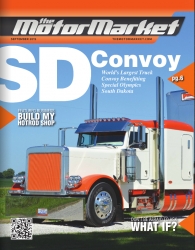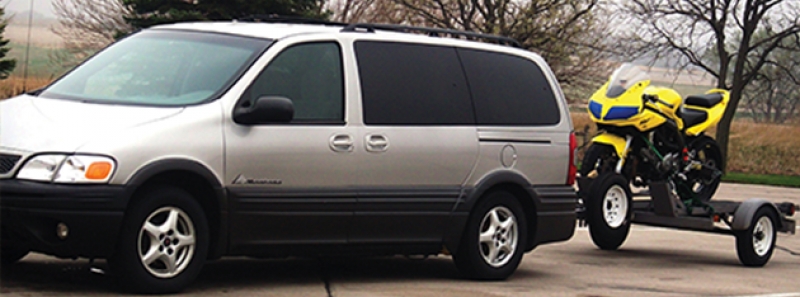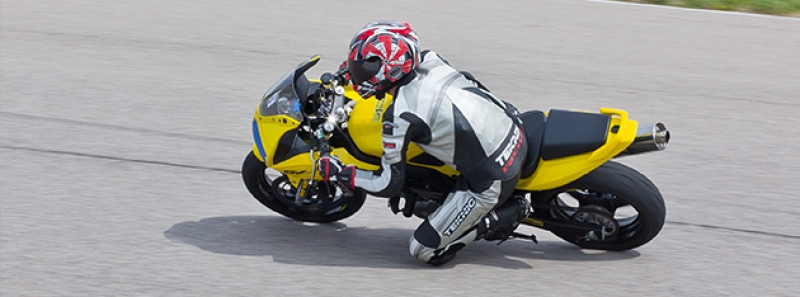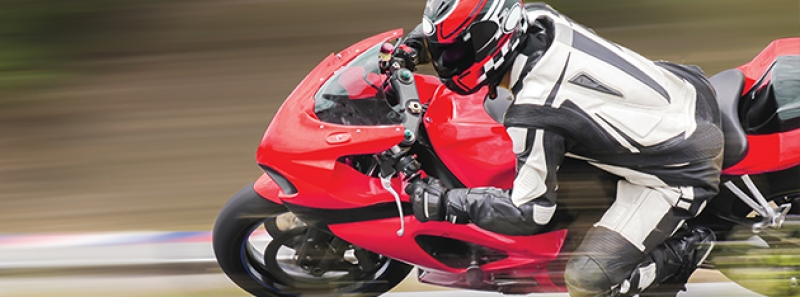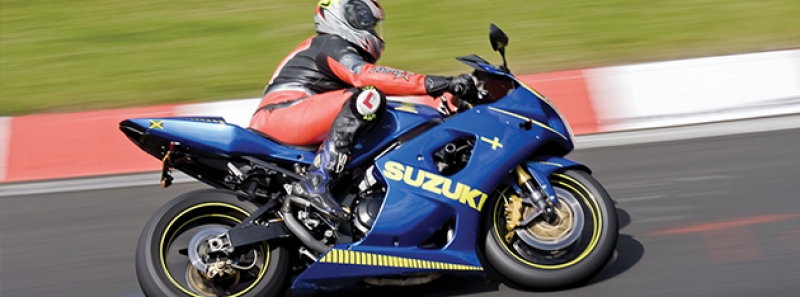More Issues
- August 2023
- September 2021
- August 2021
- July 2021
- June 2021
- May 2021
- April 2021
- March 2021
- February 2021
- January 2021
- December 2020
- November 2020
- October 2020
- September 2020
- August 2020
- July 2020
- May 2020
- April 2020
- March 2020
- February 2020
- January 2020
- December 2019
- November 2019
- October 2019
- September 2019
- August 2019
- July 2019
- June 2019
- May 2019
- April 2019
- March 2019
- February 2019
- January 2019
- December 2018
- November 2018
- October 2018
- September 2018
- August 2018
- July 2018
- June 2018
- May 2018
- April 2018
- March 2018
- February 2018
- January 2018
Taking it off the Streets
No matter how good a rider you are, and no matter how much performance your motorcycle’s spec-sheet boasts, the environment of public roads is the limiting factor to the sport of motorcycling. Horsepower can’t anticipate potholes, gravel patches, or distracted drivers, and the latest ultra-sticky tires aren’t going to give you a clear view over that blind crest or around that curve. When you’re flicking the bike through a series of esses during a spirited back-road ride, you can’t shake the feeling that you and your bike could be capable of so much more—more entry speed, deeper lean angle, and more exit speed—if only you weren’t sharing the road with roadkill, fallen branches, and trails of horse manure jutting out from the ditches. Even when every foreseeable factor is in your favor, performance still has to be sacrificed in order to account for the unforeseen. Moreover, obnoxious and irresponsible motorcycle riding is a law-enforcement magnet, and reflects poorly on the responsible motorcycling community at large.
So, what is a rider to do when s/he wants to experience motorcycling in all its unabated glory? How does one take advantage of over a century of evolution in motorcycle technology? Where can a rider’s full performance capabilities really be tasted? The answer: Take it off the streets, and take it to the track!
What is a track day?
A track day is an organized event where motorcycle riders have the opportunity to ride their motorcycle on a closed course, free from the woes of street riding. It’s the ideal riding environment. There are almost none of the environmental dangers of street riding: there are no cars, no critters, and no gravel traps. At a track day, you can focus on the art and science of your riding, not what’s lurking beyond the next corner. And although there is no speed limit, track riding is actually safer, because the environment is perfectly suited for motorcycling, contrary to the public-use infrastructure of highways.
To be clear, a track day is not a race—there is no competitive element whatsoever. The organizers want everybody to have fun, feel comfortable, and enjoy each other’s company, and that means there is a simple layout of rules and procedures to allow everybody to be safe and have a good time.
The most prominent regulation at track days is the division of riders into groups based on experience and performance—usually 3 groups titled Advanced, Intermediate, and Beginner. Each group will take turns using the track for 20-30 minutes at a time, which ensures that new track riders are not being overwhelmed by faster riders passing them, and more experienced riders are not getting “stuck” behind new riders. The details of each organization’s group structure may differ slightly.
How To Do It
Step one is to select a track day organization that hosts track days in your area. Don’t worry about gunning for a famous road course like Laguna Seca—just choose an organization that hosts events at the tracks closest to you. The closest tracks to Sioux Falls are Raceway Park of the Midlands (formerly known as Mid America Motorplex) near Omaha, Nebraska, and Motorsports Park Hastings in Hastings, Nebraska. Both have track days hosted by TrackAddix (www.trackaddix.com).
The next step is to acquire the safety gear. Most organizations have the same requirements: A one-piece leather suit with CE-approved armor, a full-face DOT-approved helmet, motorcycle-specific boots that cover the ankles, and motorcycle-specific full-gauntlet leather gloves. Additional protection such as a back protector and chest protector are usually optional for first-timers, but highly recommended. As an alternative to a one-piece leather suit, a two-piece suit that zips together at the waist is also acceptable in most organizations, as are textile suits such as the famous Aerostitch Roadcrafter suit.
The third step is prepping your bike. This may sound intimidating, but remember that you do not need a fully “race-prepped” motorcycle—The minimum requirement for most organizations are very simple and easily accomplished by anyone. Using TrackAddix as our example, the minimum requirements for a motorcycle to pass tech inspection are geared towards safety, not necessarily performance:
- Mirrors must be removed. (You need not look backwards at a track day!)
- Headlights, taillights, and blinkers should be taped over with painters’ tape and disabled. Lights are unnecessary and distracting to other riders.
- Your bike must be clean with no dripping or leaking fluids.
- Your tires must be in good condition. (Note that tires usually become “squared off” [worn in the middle] when street riding, due to the infrequency of significant lean angle. If you hit the track and start using more lean angle, this “shelf” in the profile of the tire is going to hinder your confidence, so consider getting new tires before a track day if this is the case.)
- Chain must be in good condition—cleaned, lubed, and of proper tension.
- Throttle must be self-closing.
- Front brakes must be in good condition with at least 50% pad life remaining.
- Wheel-weights must be taped over with duct tape.
- License plate must be removed.
This is merely a summary of the bare minimum. However, it is worth noting that prepping your bike is very easy, and most of these things fall under normal maintenance anyway. See your organization’s website for more details and recommendations.
The last item on the needs list is a means of hauling your bike to the track. Again, this may sound intimidating, but if you don’t have a pickup truck, or are afraid of the potential cost of investing in a “hauling rig”, have no fear! Contrary to popular American belief, you do not need a massive truck and trailer to haul a motorcycle (or even 2). A lightweight motorcycle-specific trailer will usually weigh only 300-400 pounds. Add to that your 400 pound sport bike and a couple jugs of extra gas, and you’re well under 1,000 pounds total. This kind of weight can be pulled with almost anything—a small pickup, SUV, or even a car or minivan. (Consider this: a minivan with 7 people in it weighs as much or more!) Alternatively, if you don’t want to make the jump to purchasing a trailer right away, most moving van companies offer motorcycle trailers to rent for very cheap.
It’s worth noting that it is possible to ride your motorcycle to a track day. Just make sure that the organization you’re riding with has pump-gas (not race gas) available to purchase at or near the track. While riding to the track is perfectly acceptable, anybody who’s done a track day will tell you that hauling is more preferable. If you have any significant distance between yourself and the nearest track, the ride to and from will expel valuable energy that could be used during your track sessions. And it’s nice to be able to bring some creature comforts to enjoy between sessions—food, water, lawn chairs, etc.
If you’re still feeling uneasy about trying track days, consider this: Most organizations (including TrackAddix) offer a half-day orientation class for new attendees, which takes place during the first half of your first track day. The class enhances the track day experience by getting new riders up to speed with the event’s procedures and the track’s layout, allowing everybody to be the safest and fastest they can be, and reassuring new riders that they are welcome. There is a mix of classroom and on-track time trailing a rider coach to learn proper entry and exit procedures and the best lines around the track. In almost all organizations, the orientation class is mandatory for first-time track day riders. For those who wish to further their skills, one-on-one coaching is available with rider coaches.
What’s Stopping You?
The biggest question I hear regarding track days is always, “Will I crash?”
The answer is, “It’s up to you.” Remember, there is no reason for anybody to ride faster than they are comfortable with. There’s no element of competition, and the only expectation on anybody’s shoulders is to abide by the simple guidelines that keep everybody on the track safe. Considering all the benefits of track riding we’ve explored here, and comparing them to the risks or street riding, it seems that asking the same question of street riding would offer a much more disheartening answer.
If you love the science, sport, and art of riding a motorcycle, but are frustrated with the limitations imposed by the environment of public roads, then track days could be just what you’re looking for. There’s no better way to experience the thrill of motorcycling while becoming a better, more talented rider. Compared to street riding, the risks involved are miniscule, making track days the most safe , fun, and enlightening way to ride a motorcycle.
Online information:
TrackAddix: www.trackaddix.com
Raceway Park of the Midlands: www.midamericamotorplex.com
Motorsports Park Hastings: www.racemph.com
Photo captions:
- Track day or bust! Towing your bike is the best way to get to the track, and you don’t need a big truck or heavy enclosed trailer to do it.
- By following a few simple rules, everybody is ensured a fun and safe time.
- The track is the ultimate place to practice performance riding techniques such as trail braking and body positioning.
- The track is the ultimate place to practice performance riding techniques such as trail braking and body positioning.
- The track is the ultimate place to practice performance riding techniques such as trail braking and body positioning.
